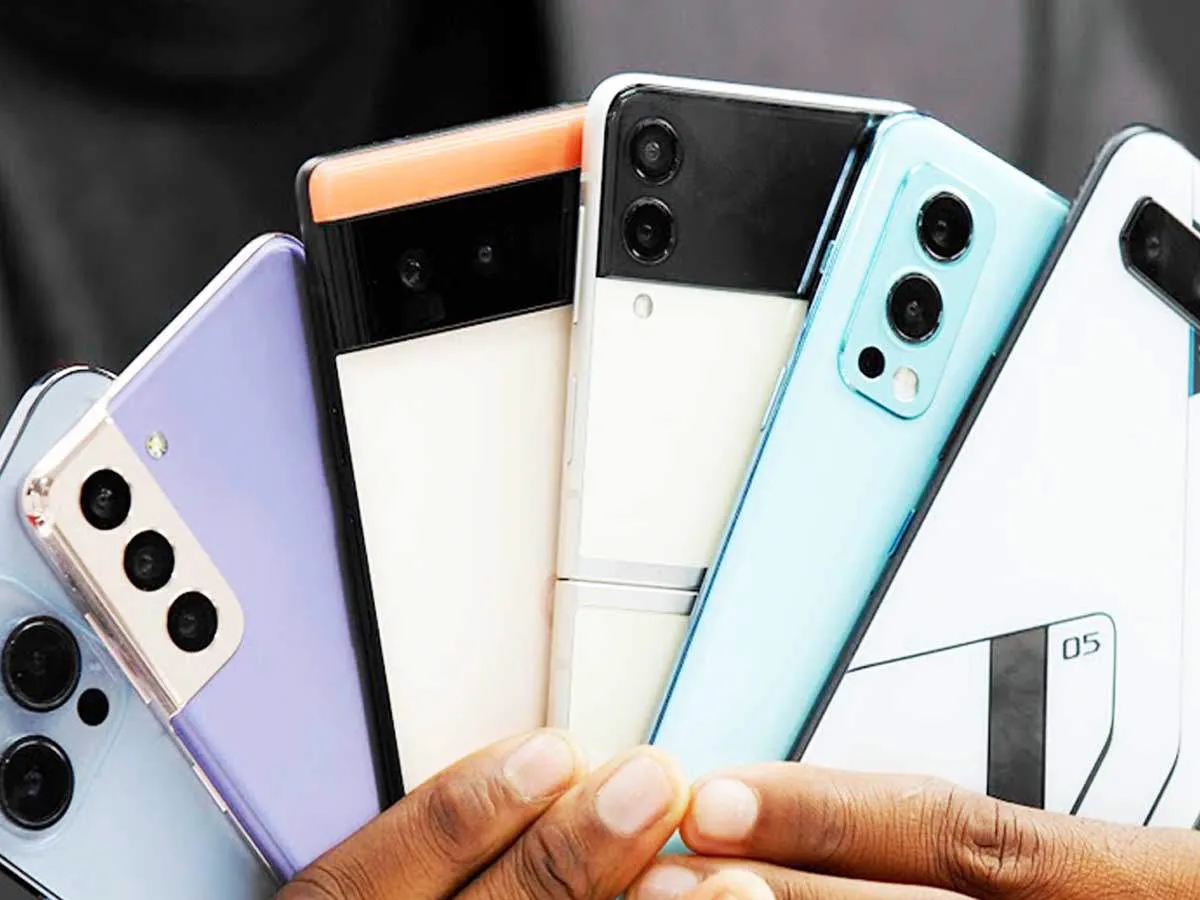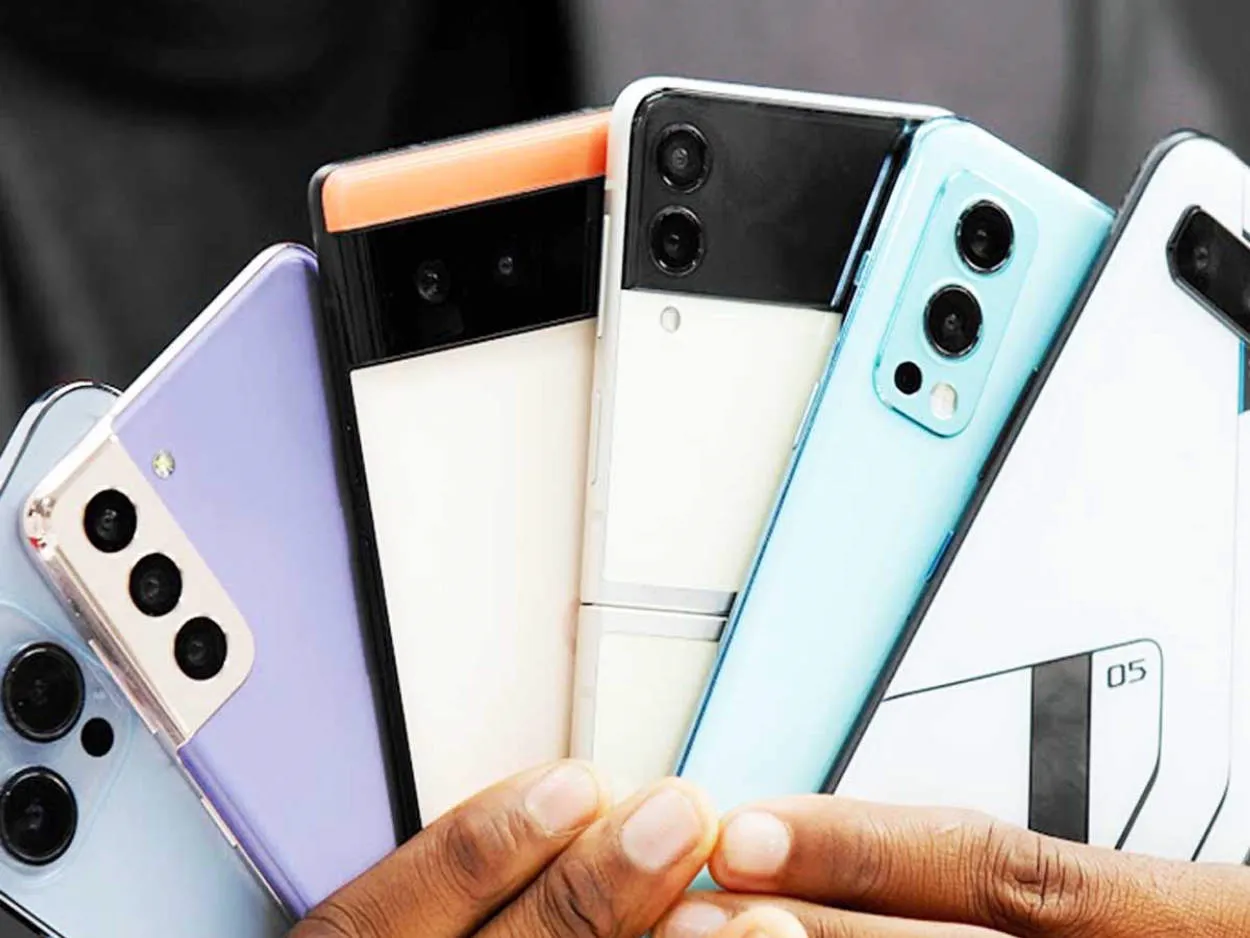When it comes to buying a new smartphone, deciphering the specifications can be overwhelming. From RAM and processor speed to camera capabilities and battery life, there are numerous factors to consider. In this article, we will break down the essential smartphone specs to look for before making your purchase, ensuring you make an informed and satisfying choice.
Screen Size and Resolution

When it comes to buying a smartphone, one of the key factors to consider is the screen size and resolution. These factors have a significant impact on the user experience and the overall usability of the device.
The screen size refers to the physical dimensions of the display, measured diagonally in inches. A larger screen provides a more immersive viewing experience, particularly for activities such as watching videos, gaming, and browsing the internet. However, it also means a bigger and potentially less portable device.
Resolution, on the other hand, is a measure of the number of pixels in the display. It determines the clarity, sharpness, and detail of the screen. A higher resolution results in crisper text, vibrant colors, and better image quality. Common resolutions include HD (720p), Full HD (1080p), and 4K Ultra HD (2160p).
It’s essential to strike a balance between screen size and resolution that suits your needs. A larger screen with a higher resolution is ideal for multimedia enthusiasts and those who consume a lot of visual content. On the other hand, if portability is a priority, a smaller screen with a lower resolution may be more suitable.
Consider your usage patterns, preferences, and the types of tasks you frequently perform on your smartphone. Whether it’s watching movies, playing games, or reading e-books, the screen size and resolution should align with your requirements. Additionally, take note of the display technology used, such as LCD or AMOLED, as it can also impact the visual experience.
In conclusion, when decoding smartphone specs before making a purchase, paying attention to the screen size and resolution is crucial. Assess your preferences and needs to choose a device that offers the best display experience for your specific usage.
Memory and Storage Options
When it comes to buying a smartphone, understanding the memory and storage options is crucial. The right combination can greatly impact the overall performance and user experience. Here are some key factors to consider:
RAM
Random Access Memory (RAM) determines how efficiently a smartphone can multitask and handle multiple apps at once. Look for devices with a higher RAM capacity if you tend to use resource-intensive applications or frequently switch between apps.
Internal Storage
Internal storage is where all your files, apps, and system data are stored. Larger storage capacities allow you to keep more photos, videos, and documents directly on your device. Consider your usage needs and whether or not the phone supports expandable storage via MicroSD cards.
Processor and Performance
Memory and storage options work in conjunction with the smartphone’s processor to deliver smooth performance. A powerful processor combined with ample RAM and storage will offer a seamless experience, especially for gaming and multitasking.
Cloud Storage
Some smartphones offer cloud storage options, allowing you to store files and media remotely. This can be useful if you have limited internal storage or if you want to access your data from various devices.
Battery Life
While not directly related to memory and storage, it’s important to consider the impact these options have on battery life. Devices with larger storage capacities and higher RAM usage may consume more power, leading to shorter battery life.
By understanding the memory and storage options, you can make an informed decision when buying a smartphone. Assess your needs, consider the device’s specifications, and choose a configuration that suits your usage patterns.
Evaluating Camera Capabilities
When looking to purchase a smartphone, one of the key features to consider is the camera capabilities. As smartphone manufacturers constantly strive to improve their devices, the camera has become a focal point of competition. To ensure you make the right choice, here are a few factors to consider when evaluating a smartphone’s camera capabilities:
-
Megapixel Count:
The number of megapixels determines the resolution and detail in your photos. Generally, a higher megapixel count means better quality images. However, keep in mind that other factors such as sensor size and lens quality also play significant roles.
-
Aperture:
The camera’s aperture refers to the size of the lens opening that allows light to enter. A wider aperture (smaller f-number) allows more light, resulting in better low-light performance and the ability to achieve a shallow depth of field.
-
Image Stabilization:
Optical or electronic image stabilization helps reduce blurriness caused by camera shake. This feature is particularly important for capturing steady shots in low-light conditions or when shooting videos.
-
Additional Features:
Look for features such as autofocus, HDR (High Dynamic Range), panorama mode, and manual controls. These can greatly enhance your photography experience and allow you to capture more creative and professional-looking shots.
-
Image Processing:
The quality of the image processing software on a smartphone can significantly affect the final result. Pay attention to reviews and sample photos to get an idea of how well the camera processes images.
-
Front Camera:
If you frequently take selfies or make video calls, don’t overlook the specifications of the front-facing camera. Look for features like wide-angle lenses, high-resolution sensors, and built-in beauty modes.
By considering these factors and conducting thorough research, you can make an informed decision when it comes to evaluating a smartphone’s camera capabilities. Remember, what matters most is finding a camera that suits your specific needs and preferences.
Understanding Connectivity Features
When it comes to buying a smartphone, understanding the different connectivity features is crucial. These features determine how your phone interacts with the outside world, allowing you to make the most out of your device. Here are some key connectivity features to look for:
1. Network Compatibility
Before purchasing a smartphone, ensure that it supports the appropriate network bands for your area. This will enable you to access voice calls, data services, and internet connectivity seamlessly.
2. Wi-Fi
A strong Wi-Fi connection is essential for fast internet browsing, app downloads, and video streaming. Look for smartphones that support the latest Wi-Fi standards, such as 802.11ac, for enhanced speed and reliability.
3. Bluetooth
Bluetooth allows you to connect your smartphone to various devices wirelessly. This feature is handy for pairing with wireless headphones, speakers, smartwatches, and even your car’s entertainment system.
4. NFC
Near Field Communication (NFC) enables contactless data transmission between devices. It is commonly used for mobile payments, sharing files, and pairing devices by simply tapping them together.
5. GPS
A built-in GPS (Global Positioning System) greatly enhances location-based services, navigation, and mapping applications. Ensure your chosen smartphone has a reliable GPS system to make the most of location-based features.
6. USB Type-C
USB-C is the latest standard for charging and data transfer. It offers faster charging speeds and can be plugged in either way, making it more convenient and versatile than its predecessors.
By understanding these connectivity features, you can make an informed decision when purchasing a smartphone that meets your specific needs. Remember to prioritize the features that are most important to you, ensuring a seamless and efficient mobile experience.
The Importance of Security Features
In today’s digital era, where smartphones have become an integral part of our lives, it is crucial to consider the security features before buying a new device. With increasing instances of cyber threats, phone manufacturers are focusing on enhancing the security of their products to protect user data and privacy.
One of the most important security features to look for is a reliable biometric authentication system, such as fingerprint or facial recognition. These technologies provide an additional layer of protection, ensuring that only authorized individuals can access the device.
Another essential security aspect is encryption. Smartphones with robust encryption algorithms safeguard the data stored on the device, making it harder for hackers to intercept or decode sensitive information.
It is also advisable to choose a smartphone that receives regular security updates from the manufacturer. These updates patch vulnerabilities and protect against emerging threats, improving the overall security of the device.
Furthermore, a secure app ecosystem is essential for a safe smartphone experience. Make sure the platform you choose (such as Android or iOS) has effective security measures in place, like strict app approval processes and app sandboxing.
Lastly, consider the privacy settings and permissions available on the device. Look for smartphones that provide granular control over app permissions, allowing you to decide which apps can access your personal data.
In conclusion, when buying a smartphone, it is crucial to prioritize security features. By choosing a device with reliable biometric authentication, encryption, regular security updates, a secure app ecosystem, and robust privacy settings, you can ensure the safety and privacy of your personal information in the digital world.
Choosing Between Brand and Budget
When it comes to buying a new smartphone, one of the key decisions you will need to make is whether to prioritize brand or budget. With so many options available in the market, it can be quite overwhelming. However, understanding the importance of both factors can help you make a more informed decision.
Brand
Opting for a well-known brand when buying a smartphone has its advantages. Established brands often have a strong reputation for quality and reliability. They invest heavily in research and development, ensuring that their devices come with the latest technology and innovative features. Additionally, these brands usually have a wide range of accessories and reliable customer support.
However, choosing a brand often comes at a premium price. High-end smartphones from popular brands can be more expensive compared to lesser-known brands offering similar specifications. So, considering your budget is essential.
Budget
On the other hand, considering your budget allows you to explore a wider range of smartphones. Lesser-known brands can offer competitive pricing without compromising on specifications. Many budget-friendly options provide decent performance, good cameras, and fast processors.
While budget smartphones may not have the same level of brand recognition, they often offer excellent value for money. However, it’s crucial to thoroughly research and read reviews to ensure that the chosen device meets your requirements and expectations.
Choosing Wisely
Ultimately, the choice between brand and budget depends on your personal preferences and priorities. If you value brand reputation, cutting-edge technology, and exceptional customer support, investing in a reputable brand is a wise decision. However, if you’re on a tight budget and willing to explore newer options, a lesser-known brand can offer a more affordable smartphone without sacrificing too much on quality.
Regardless of your decision, it’s vital to carefully evaluate the specifications, features, and user reviews before making a purchase. Comparing different models within your chosen category and considering long-term usability will ensure you find the perfect smartphone that meets your specific needs.
Conclusion
Before buying a smartphone, it is important to carefully consider its specifications. Look for a powerful processor, ample RAM, and sufficient storage capacity for your needs. Additionally, pay attention to the camera quality, display resolution, and battery life. Lastly, don’t forget to research the brand’s reputation and customer reviews to ensure a reliable device. Remember, a well-informed decision will lead to a satisfying smartphone experience.



